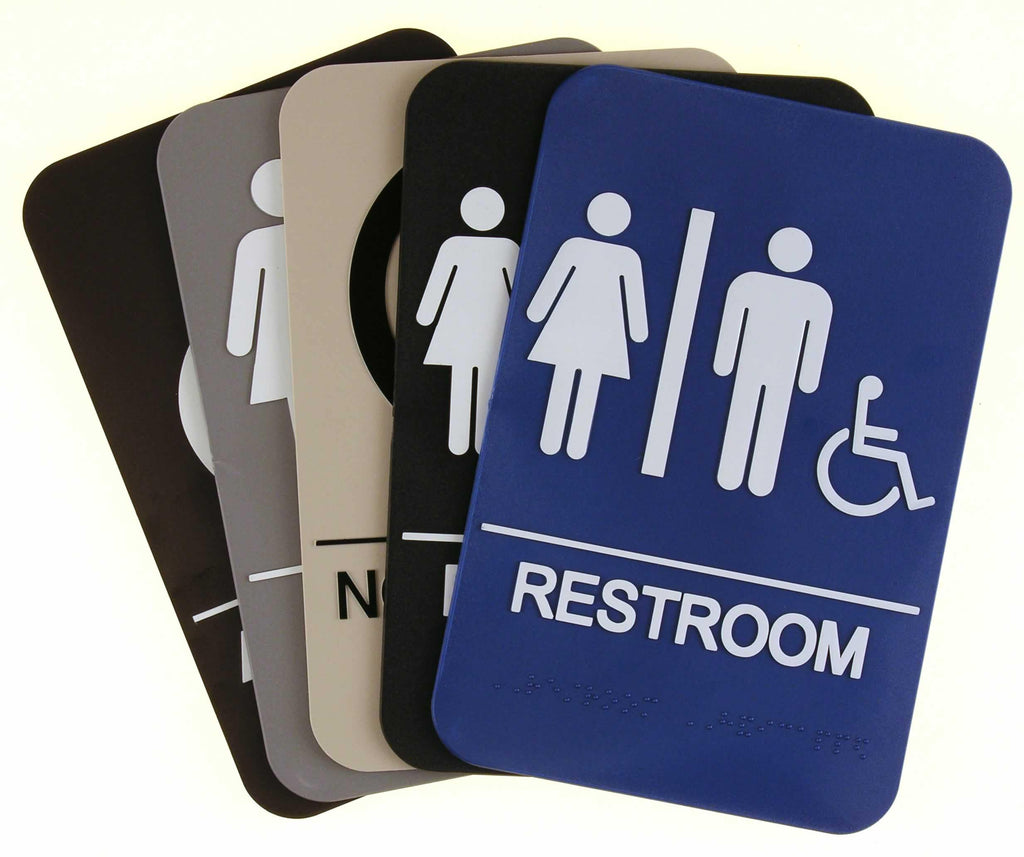The Influence of ADA Signs on Community Availability
The Influence of ADA Signs on Community Availability
Blog Article
Checking Out the Key Functions of ADA Indications for Boosted Ease Of Access
In the world of accessibility, ADA indicators serve as silent yet powerful allies, making sure that spaces are inclusive and accessible for individuals with handicaps. By integrating Braille and tactile aspects, these indications damage barriers for the visually impaired, while high-contrast shade schemes and clear font styles cater to varied visual requirements.
Importance of ADA Conformity
Guaranteeing compliance with the Americans with Disabilities Act (ADA) is critical for fostering inclusivity and equal accessibility in public areas and workplaces. The ADA, passed in 1990, mandates that all public facilities, companies, and transport services fit people with disabilities, guaranteeing they take pleasure in the exact same legal rights and opportunities as others. Compliance with ADA requirements not only satisfies legal obligations however also enhances an organization's track record by showing its dedication to variety and inclusivity.
One of the vital elements of ADA conformity is the application of available signage. ADA indicators are created to ensure that individuals with handicaps can quickly browse through buildings and areas.
In addition, adhering to ADA guidelines can mitigate the danger of possible penalties and legal consequences. Organizations that stop working to abide by ADA guidelines might face charges or claims, which can be both damaging and financially challenging to their public picture. Hence, ADA conformity is integral to promoting a fair setting for everybody.
Braille and Tactile Aspects
The unification of Braille and responsive aspects into ADA signs personifies the principles of ease of access and inclusivity. It is usually positioned under the corresponding message on signs to make certain that individuals can access the info without aesthetic support.
Responsive components expand beyond Braille and consist of raised symbols and characters. These components are developed to be noticeable by touch, permitting people to identify room numbers, restrooms, departures, and other vital areas. The ADA establishes particular guidelines regarding the dimension, spacing, and positioning of these tactile aspects to enhance readability and make sure consistency throughout various environments.

High-Contrast Shade Plans
High-contrast color schemes play a critical role in boosting the visibility and readability of ADA signs for individuals with aesthetic problems. These schemes are crucial as they optimize the difference in light reflectance in between message and history, guaranteeing that signs are quickly discernible, also from a distance. The Americans with Disabilities Act (ADA) mandates using particular color contrasts to accommodate those with minimal vision, making it an important aspect of conformity.
The effectiveness of high-contrast shades hinges on their capacity to stick out in numerous lighting conditions, including dimly lit settings and locations with glow. Normally, dark text on a light history or light message on a dark history is used to achieve optimal comparison. As an example, black text on a white or yellow background provides a raw aesthetic difference that assists in fast acknowledgment and understanding.

Legible Fonts and Text Size
When taking into consideration the layout of ADA signage, the choice of clear typefaces and suitable text size can not be overstated. The Americans with Disabilities Act (ADA) mandates that typefaces should be not italic and sans-serif, oblique, script, highly decorative, or of unusual type.
According to ADA guidelines, the minimum text elevation need to be 5/8 inch, and it ought to boost proportionally with viewing range. Uniformity in message dimension contributes to a his response cohesive visual experience, aiding people in navigating settings effectively.
Furthermore, spacing in between lines and letters is indispensable to clarity. Ample spacing prevents characters from appearing crowded, enhancing readability. By sticking to these standards, developers can dramatically improve availability, making sure that signage offers its desired function for all people, despite their aesthetic capabilities.
Efficient Placement Techniques
Strategic positioning of ADA signs is essential for taking full advantage of accessibility and making certain conformity with lawful standards. Appropriately positioned signs lead individuals with specials needs successfully, promoting navigating in public areas. Key considerations consist of distance, elevation, and visibility. ADA guidelines stipulate that indicators ought to be mounted at an elevation in between 48 to 60 inches from the ground to guarantee they are within the line of sight for both standing and seated people. This basic height range is critical for inclusivity, allowing mobility device users and individuals of varying heights to accessibility details easily.
In addition, signs have to be put nearby to the latch side of doors to enable easy recognition before entry. Consistency in sign placement throughout a facility enhances predictability, minimizing complication and boosting general customer experience.

Verdict
ADA indications play an essential function in advertising access by integrating functions that deal with the demands of individuals with disabilities. These aspects collectively promote a comprehensive setting, highlighting the importance of ADA conformity in making certain equivalent accessibility for all.
In the realm of ease of access, ADA indications offer as quiet yet effective allies, making sure that rooms are navigable and inclusive for individuals with specials needs. The ADA, passed in 1990, mandates that webpage all public facilities, employers, and transport services suit individuals with specials needs, guaranteeing they take pleasure in the same rights and chances as others. ADA Signs. ADA indications are designed to ensure that individuals with specials needs can easily browse through spaces and structures. ADA standards stipulate that indicators ought to be mounted at an elevation between 48 to 60 inches from the ground to ensure they are within the line of sight for both standing and seated individuals.ADA indicators play a crucial role in advertising access by integrating features that deal with the demands of individuals with impairments
Report this page